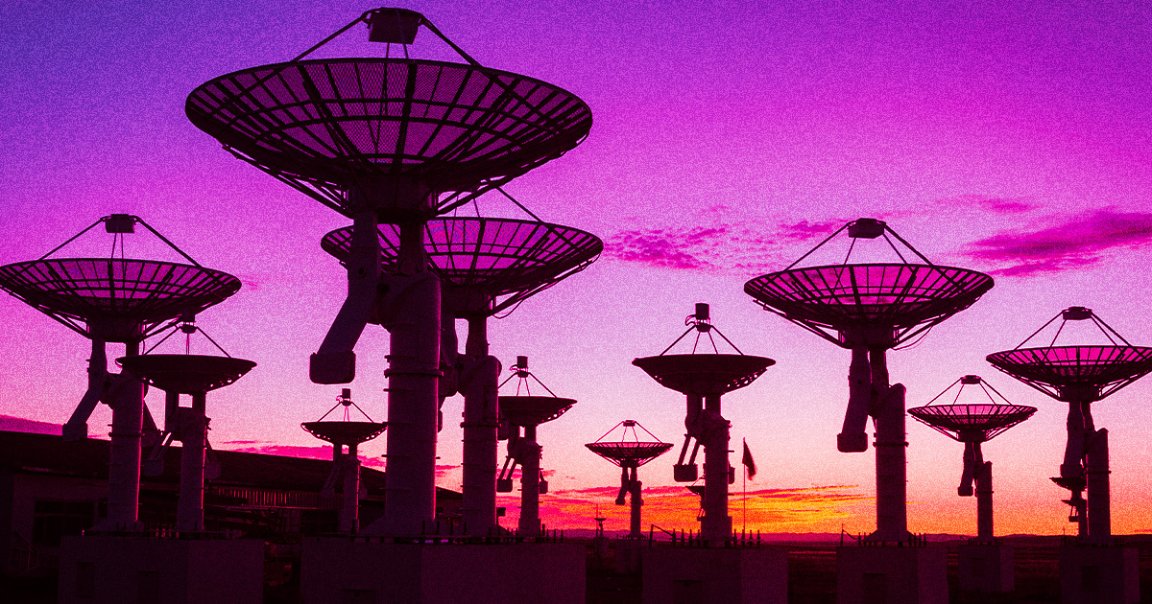
Orville RedenFRBer
Astronomers have intercepted a mysterious and ancient radio signal that’s traveled from the farthest reaches of the cosmos — for an astonishing eight billion years, more than half the lifespan of the universe — before finally reaching the Earth.
The signal is what’s known as a fast radio burst (FRB), and the astronomers’ findings, published in the journal Science, indicate that this is the most powerful ever observed. So powerful, in fact, that the FRB released, in less than a millisecond, the same amount of energy that our Sun emits in 30 years.
“That is enough power to microwave a bowl of popcorn about two times the size of the Sun,” study co-author Ryan Shannon, an astrophysicist at the Swinburne University of Technology, told New Scientist.
What could produce such a powerful blast? Astronomers aren’t certain, but the researchers say this remarkable detection could help dispel the mystery behind the origins of FRBs, as well as providing an invaluable tool with which to measure the cosmos itself.
“The paper confirms that fast radio bursts are common events in the cosmos and that we will be able to use them to detect matter between galaxies, and better understand the structure of the universe,” Shannon said in a statement about the work.
Neutron Wave
FRBs are elusive oddities; the first wasn’t even detected until 2007, and since then only around 50 have been added to that tally. This one, designated FRB 20220610A, was detected in June last year using the ASKAP radio telescope array in western Australia.
When the researchers followed up by using telescopes in Europe and South America, they were able to reveal the burst’s origin. They were fascinated to discover, though, it was coming from much farther than they’d assumed. Expecting to find a source galaxy, they instead uncovered that the FRB was likely originating from a cluster of merging galaxies rife with the formation of new stars.
According to the researchers, this backs up the prevailing theory that these bursts come from neutron stars, which are the collapsed cores of massive stars that are believed to be some of the densest objects in the universe.
Cosmic Flashlight
Most tantalizingly of all, the burst supports what’s known as the Macquart relation, which suggests that the greater the distance an FRB came from, the more diffuse gas between galaxies it would reveal along its journey.
“Fast radio bursts sense this ionized material,” Shannon explained in the statement. “Even in space that is nearly perfectly empty they can ‘see’ all the electrons, and that allows us to measure how much stuff is between the galaxies.”
That intergalactic material is crucial to account for. Right now, without being able to see it, “if we count up the amount of normal matter in the Universe — the atoms that we are all made of — we find that more than half of what should be there today is missing,” said Shannon.
If that missing matter is concealed between galaxies, FRBs could help spot them. If not, we may have to rethink some of the details of our cosmological models.
More on space: NASA Spacecraft Snaps Beautiful Photo of Jupiter’s Volcano-Dotted Moon